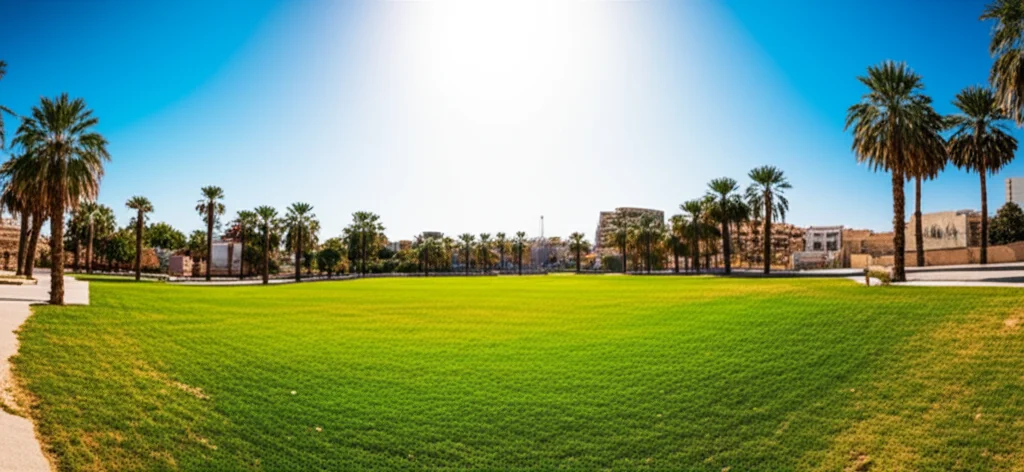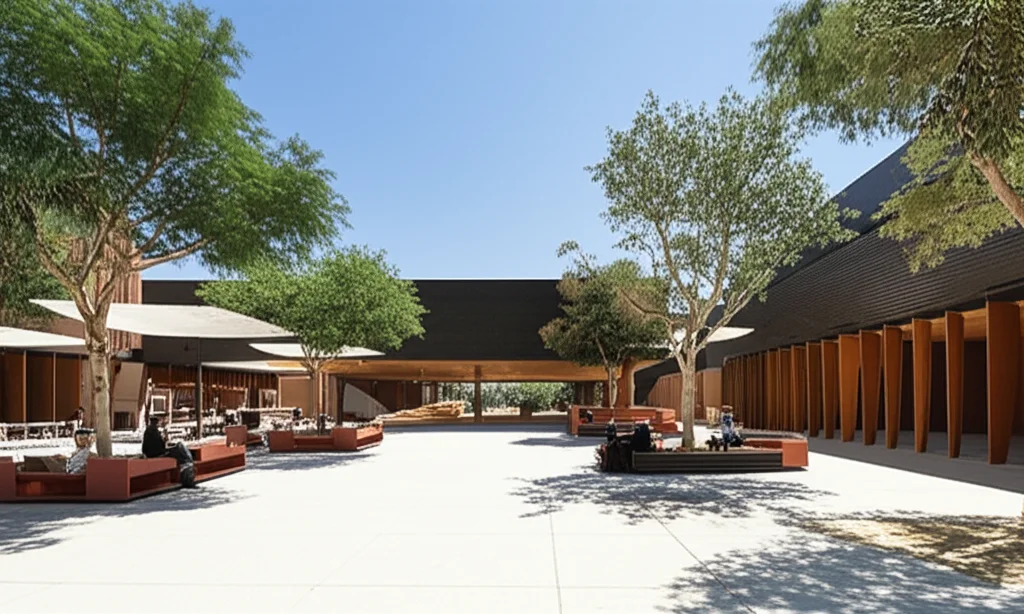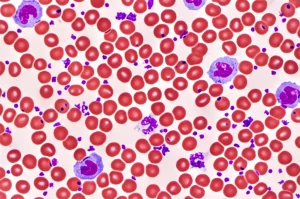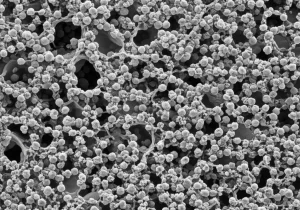Trees, Tech, and Thermal Comfort: Hacking Hot Cities with AI Design
Alright, let’s talk about something super cool that’s happening in the world of making our cities nicer places to hang out, especially when it’s scorching hot outside. You know those communal spots – parks, plazas, just places where people gather? They’re vital for connecting with folks and just generally boosting our mood and health. But let’s be real, in places like Egypt, with that intense hot arid climate, stepping outside during the day can feel like walking into an oven.
So, how do we make these essential outdoor spaces actually *comfortable*? That’s where some seriously smart thinking, and a bit of tech magic, comes in. I’ve been looking into this fascinating research that dives deep into using something called **generative design** to figure out the absolute best places to plant trees to beat the heat.
Why Trees and Tech?
Think about it. Trees are nature’s air conditioners. They provide shade, and through a process called evapotranspiration, they cool the air around them. We’ve known this forever. But figuring out the *perfect* spot for every tree in a complex urban environment? That’s tricky. You’ve got buildings casting shadows, open areas getting blasted by sun, wind patterns, and you want to maximize comfort for people while maybe even using fewer trees overall to save water and costs.
Traditional design methods can only get you so far. You draw some plans, maybe run a few simulations, and make educated guesses. But what if you could explore *hundreds* or even *thousands* of possibilities automatically? That’s the power of generative design. It’s like giving a super-smart computer a set of goals (like “make this area feel cooler”) and some rules (like “trees need space,” “don’t put a tree in a building”), and letting it come up with a bunch of potential solutions.
This study I explored uses AI-driven software, specifically tools like Dynamo with evolutionary algorithms, to do just that. It’s an iterative process – the software generates designs, evaluates how well they meet the goals, and then “mutates” them, keeping the best bits and trying new combinations, kind of like natural selection for design. It’s dynamic and adapts to different urban shapes, which is pretty neat.
Putting it to the Test in Madinaty, Cairo
The researchers wanted to see if this generative design approach really works in a hot arid climate. They picked three different types of communal spaces in Madinaty, a large development in New Cairo:
- A **fully clustered neighborhood** (lots of buildings close together)
- A **semi-clustered neighborhood** (a mix of buildings and open space)
- A **fully open neighborhood** (mostly open green space)
These different settings are perfect for testing how adaptable the tool is.
The methodology was pretty rigorous. First, they analyzed the existing conditions of these three areas, looking at the current buildings and vegetation. Then came the fun part: using the generative design tool to optimize the tree distribution in each space, taking the existing buildings into account. Finally, they used simulation software (Grasshopper and Ladybug) to measure the outdoor thermal comfort using a standard index called **UTCI** (Universal Thermal Climate Index) and compared the original layouts to the optimized ones.
Understanding UTCI
Okay, quick detour into what UTCI is. It stands for **Universal Thermal Climate Index**, and it’s a clever way to measure how hot or cold it *feels* to a human in a specific outdoor environment. It doesn’t just look at air temperature. It considers a bunch of things that affect how your body feels the heat (or cold):
- Air temperature
- Mean radiant temperature (how much heat radiation you’re getting from surfaces like the sun, buildings, pavement)
- Air humidity
- Wind speed
- Even things like what you’re wearing and how active you are (though the study uses standard models for this).
Basically, UTCI tells you the equivalent air temperature in a standard environment that would make you feel the same level of thermal stress as you do in the actual, complex outdoor environment. A lower UTCI in hot conditions means it feels cooler and more comfortable. The study focused on a particularly hot time – noon to 2 PM on June 21st, the longest day of the year, to simulate peak heat stress.
The Generative Design Process: A Peek Under the Hood
So, how does the generative design tool actually *do* this? The researchers used a visual programming tool called Dynamo, often used with building information modeling (BIM) software like Revit. They scripted an algorithm that basically does the following:

It starts with defining the problem:
- **Inputs:** What kind of trees can we use? What’s the area we’re working in? Where are the existing buildings?
- **Constraints:** How close can trees be to each other (to grow properly)? How far from the edge of the area?
- **Objectives:** Maximize the area covered by tree shade, ideally while minimizing the number of trees used.
The script then generates a grid over the area and starts randomly placing potential tree locations. It checks if these locations violate any constraints (like being too close to another tree or a building). Then, it evaluates how well that specific arrangement of trees meets the objectives – how much shade does it provide?
The evolutionary algorithm part comes in by taking the “fitter” designs (those that provide more shade) and creating new variations by slightly changing the tree positions or adding/removing trees (mutation). It repeats this process over many “generations” and “seeds” (different starting points) to explore a wide range of possibilities and converge on better and better solutions.
For this study, they ran 200 simulations with 5 different seeds for each neighborhood type. They chose a “randomization” method over a pure “optimization” method because it gives designers more options to choose from, balancing the computer’s best solution with practical considerations like cost (fewer trees). The goal was to find the design that offered the highest shade coverage with the *lowest* possible number of trees among the high-performing options.
What Did They Find? The Results Are In!
After all the generating and simulating, the results were quite telling. They compared the average UTCI values for the base case (the existing tree layout) and the optimized case generated by the tool. Remember, lower UTCI is better in hot conditions.
* Clustered Neighborhood: The base case had 43 trees and an average UTCI of 38.00 °C (“Very Strong Heat Stress”). The optimized design used *fewer* trees (33) but achieved a lower average UTCI of 37.55 °C (“Strong Heat Stress”). That’s a noticeable improvement of 0.45 °C, even with 10 fewer trees! This suggests that *where* you put the trees matters a lot, not just how many you have.

* Semi-Clustered Neighborhood: The base case had 27 trees and a high average UTCI of 39.40 °C (“Very Strong Heat Stress”). The optimized design used *more* trees (45), but significantly improved the comfort, bringing the average UTCI down to 38.01 °C (still “Very Strong Heat Stress,” but a substantial 1.39 °C drop). In this case, adding more trees in the right spots made a big difference in a less shaded environment.
* Fully Open Neighborhood: This was the toughest case, as expected, with minimal existing shade. The base case had 31 palms (palms offer less dense shade than broadleaf trees) and an average UTCI of 39.60 °C (“Very Strong Heat Stress”). The optimized design used slightly *fewer* palms (25) and resulted in a very minor improvement, with an average UTCI of 39.55 °C. While the improvement was small (0.05 °C), it’s notable that they achieved *any* reduction in stress with fewer palms, highlighting the challenge of open, hot environments and the potential for optimization even there.

These results confirm a few things. First, tree distribution absolutely impacts outdoor thermal comfort, especially in hot climates. Second, generative design tools *can* find better tree placement strategies than existing layouts, sometimes even achieving better comfort with fewer trees. The tool seemed most effective in the clustered neighborhood, where buildings already provide some baseline shade, allowing strategic tree placement to fine-tune the microclimate. Open areas remain the most challenging, though optimization still offered slight benefits.
Why This Matters for Our Cities
Okay, so we can make places feel a bit cooler with smart tree planting. Big deal? Yes, it’s a *huge* deal!
- Better Well-being: Comfortable outdoor spaces mean people actually *use* them. This encourages social interaction, builds community, and combats loneliness.
- Healthier Lifestyles: When it’s comfortable to be outside, people are more likely to walk, play, and be physically active, which is great for public health.
- Combating Heat Stress: With climate change making heatwaves more intense and frequent, reducing heat stress in urban areas is critical for preventing heat-related illnesses and deaths. Trees are a key nature-based solution.
- Resource Efficiency: The ability to achieve better comfort with potentially fewer trees (as seen in the clustered case) means saving precious water in arid regions and reducing maintenance costs.
- Smarter Design: Generative design lets landscape architects explore possibilities that might be beyond human intuition or capacity in a reasonable timeframe. It’s a powerful decision-support tool, especially in the early stages of a project.
This research essentially provides a framework for using cutting-edge AI tools to tackle a very real, very pressing urban problem. It shows that by integrating technology into the landscape design process, we can create more resilient, sustainable, and comfortable cities.
Looking Ahead
Of course, no study is the final word. The researchers point out that while the simulations show promise, real-world validation is needed. Things like how different tree species perform, how fast they grow, and the long-term effects on the microclimate need more study. Incorporating other factors like building materials and their reflectivity could also make the models even more accurate. And hey, doing a full economic analysis (cost of planting vs. savings from reduced heat/water use) would be super valuable too.

But even with these points for future work, this study makes a strong case. It demonstrates that generative design is a powerful tool for landscape architecture, capable of optimizing complex environmental goals like thermal comfort. It’s about using AI not to replace designers, but to augment their creativity and problem-solving abilities, leading to better outcomes for people and the planet. Making hot cities cooler, one intelligently placed tree at a time!
Source: Springer







